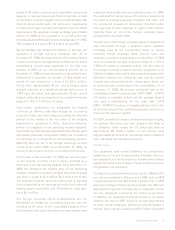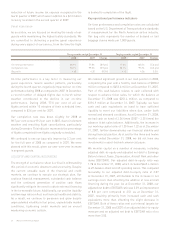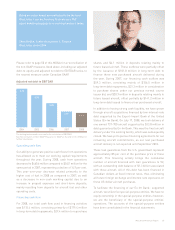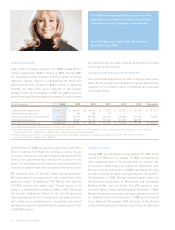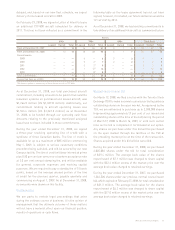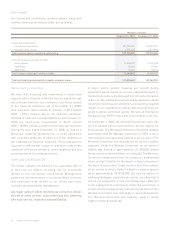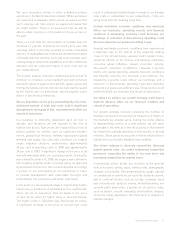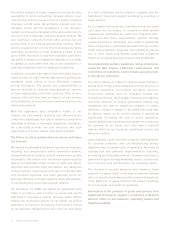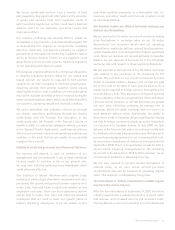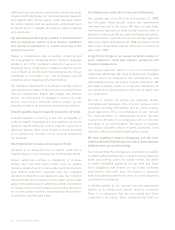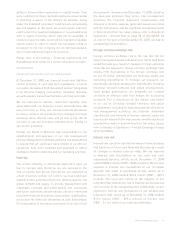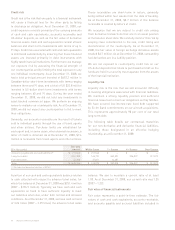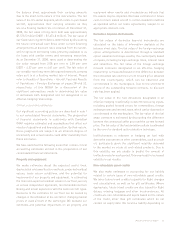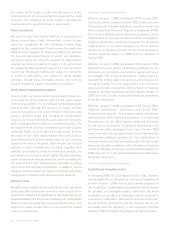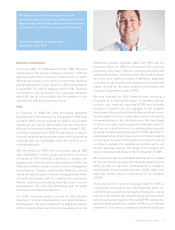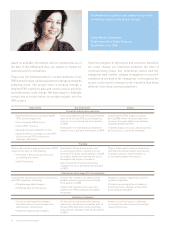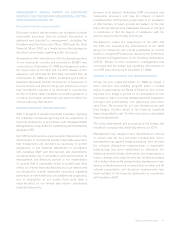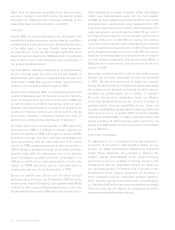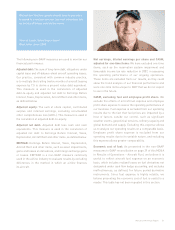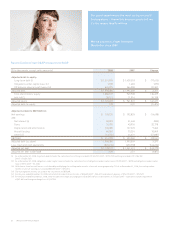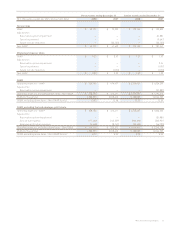Westjet 2008 Annual Report Download - page 47
Download and view the complete annual report
Please find page 47 of the 2008 Westjet annual report below. You can navigate through the pages in the report by either clicking on the pages listed below, or by using the keyword search tool below to find specific information within the annual report.WestJet 2008 Annual Report 43
ability to fi nance future operations or capital needs. If we
were to default on these covenants and were unsuccessful
in obtaining a waiver of the default, all amounts owing
under the defaulted agreement could become immediately
due and payable. In this event, we would require suffi cient
cash to meet the repayment obligation or require additional
debt or equity fi nancing, which may not be available. If
unable to repay the debt, we would be required to liquidate
certain assets in order to obtain the necessary funds or
be subject to the risk of having our aircraft repossessed,
which could adversely impact our business.
Please refer to Accounting – Financial Instruments and
Risk Management below for a further discussion on risks.
ACCOUNTING
Financial instruments and risk management
At December 31, 2008, our fi nancial assets and liabilities
consist primarily of cash and cash equivalents, accounts
receivable, derivatives both designated and not designated
in an effective hedging relationship, US-dollar deposits,
accounts payable and accrued liabilities, and long-term debt.
We are exposed to market, credit and liquidity risks
associated with our fi nancial assets and liabilities. We
will, from time to time, use various fi nancial derivatives
to reduce market risk exposures from changes in foreign
exchange rates, interest rates and jet fuel prices. We do
not hold or use any derivative instruments for trading or
speculative purposes.
Overall, our Board of Directors has responsibility for the
establishment and approval of our risk management
policies. Management continually performs risk assessments
to ensure that all signifi cant risks related to us and our
operations have been reviewed and assessed to refl ect
changes in market conditions and our operating activities.
Fuel risk
The airline industry is inherently dependent upon jet
fuel to operate and, therefore, we are exposed to the
risk of volatile fuel prices. Fuel prices are impacted by
a host of factors outside our control, such as signifi cant
weather events, geopolitical tensions, refi nery capacity, and
global demand and supply. To provide management with
reasonable foresight and predictability into operations
and future cash fl ows, we periodically use short-term and
long-term fi nancial derivatives. Upon proper qualifi cation,
we account for these fuel derivatives as cash fl ow hedges.
For a discussion of the nature and extent of our use of fuel
derivatives for the year ended December 31, 2008, including
the business purposes they serve; risk management
activities; the fi nancial statement classifi cation and
amounts of income, expense, gains and losses associated
with the instruments; and the signifi cant assumptions made
in determining their fair value, please refer to Results of
Operations – Aircraft Fuel on page 28 of this MD&A. As
at, and for the year ended December 31, 2007, we had no
outstanding fuel derivatives.
Foreign currency exchange risk
Foreign currency exchange risk is the risk that the fair
value of recognized assets and liabilities or future cash fl ows
would fl uctuate as a result of changes in foreign exchange
rates. We are exposed to foreign currency exchange risks
arising from fl uctuations in the foreign exchange rate
on our US-dollar denominated net monetary assets and
operating expenditures. To manage our exposure, we
periodically use fi nancial derivative instruments, including
US-dollar forward contracts and option arrangements.
Upon proper qualifi cation, we designate our forward
contracts as effective cash fl ow hedges for accounting
purposes. For a discussion of the nature and extent
of our use of US-dollar forward contracts and option
arrangements, including the business purposes they serve;
risk management activities; the fi nancial statement
classifi cation and amounts of income, expense, gains and
losses associated with the instruments; and the signifi cant
assumptions made in determining their fair value, please
refer to Results of Operations – Foreign Exchange on page
32 of this MD&A.
Interest rate risk
Interest rate risk is the risk that the value of fi nancial assets
and liabilities or future cash fl ows will fl uctuate as a result
of changes in market interest rates. We are exposed
to interest rate fl uctuations on our cash and cash
equivalents balance, which, as at December 31, 2008
totalled $820.2 million (2007 – $653.6 million). We are also
exposed to interest rate fl uctuations on our US-dollar
deposits that relate to purchased aircraft, which, as at
December 31, 2008 totalled $24.3 million (2007 – $22.7
million). The fi xed-rate nature of the majority of our
long-term debt reduces the risk of interest rate fl uctuations
over the term of the outstanding debt. Additionally, we are
exposed to interest rate fl uctuations on our variable-rate
long-term debt, which as at December 31, 2008 totalled
$11.2 million (2007 – $29.6 million) or 0.8 per cent
(2007 – 2.1 per cent) of our total long-term debt.


